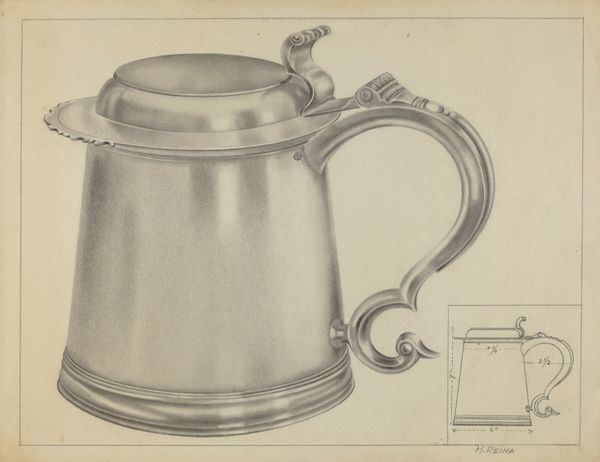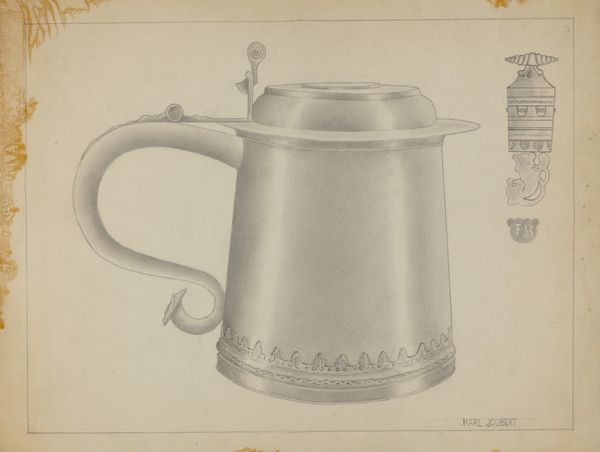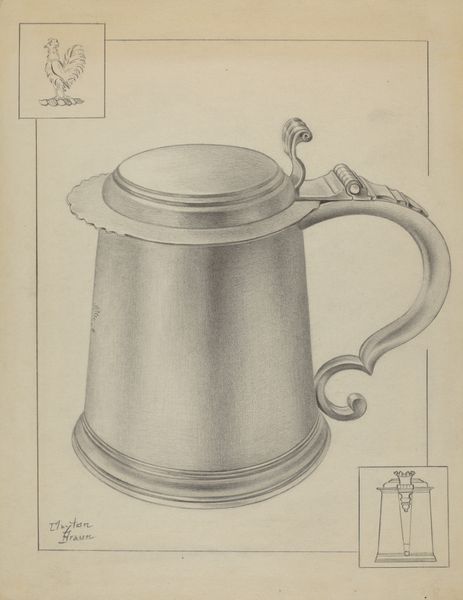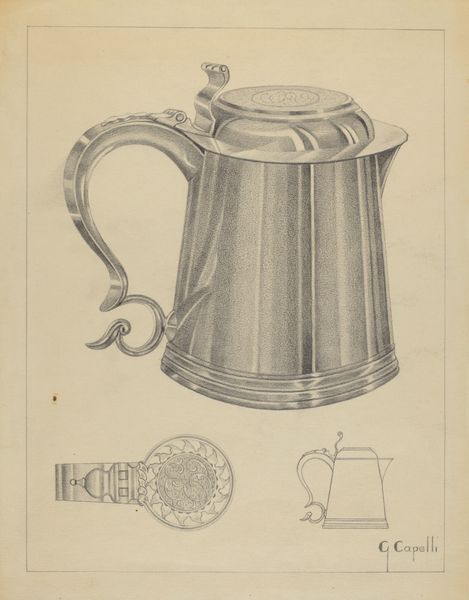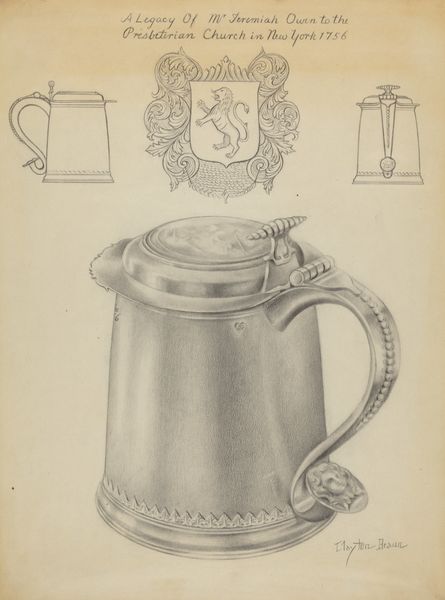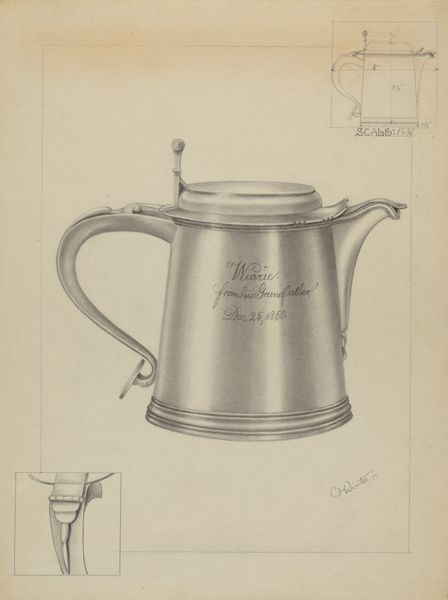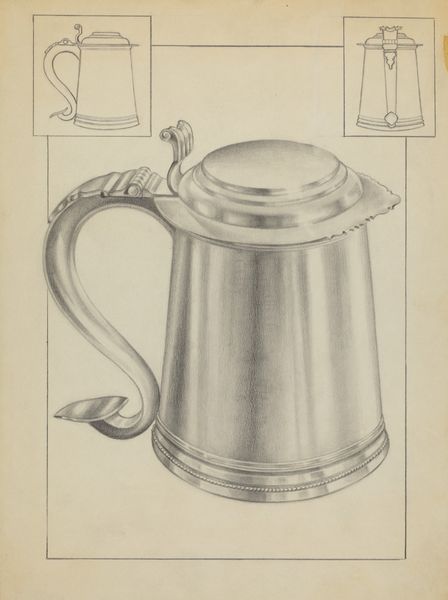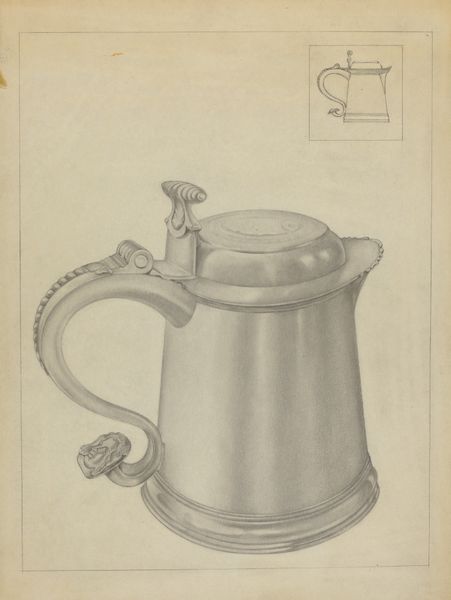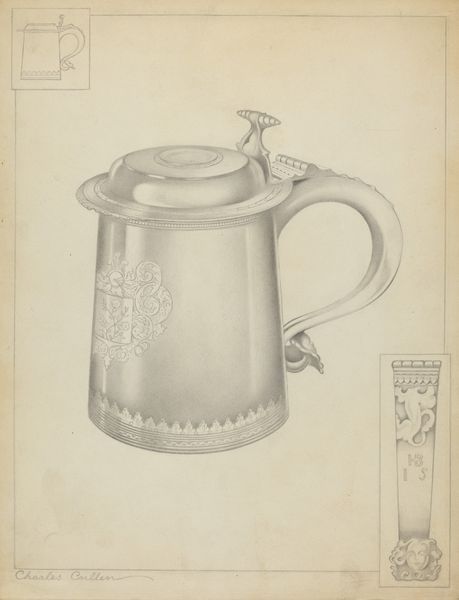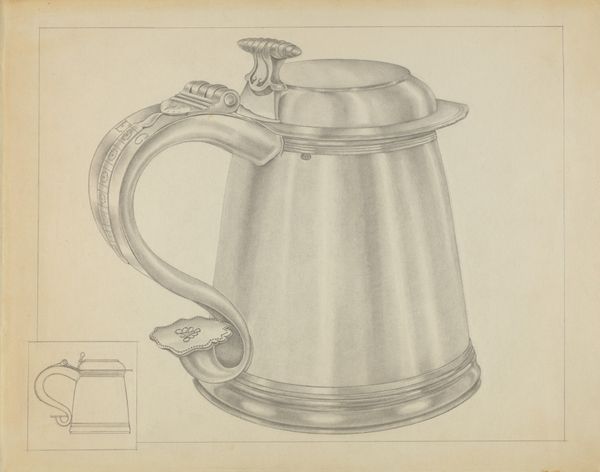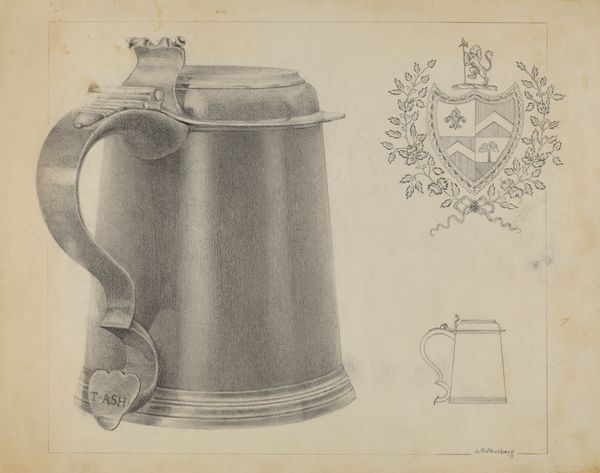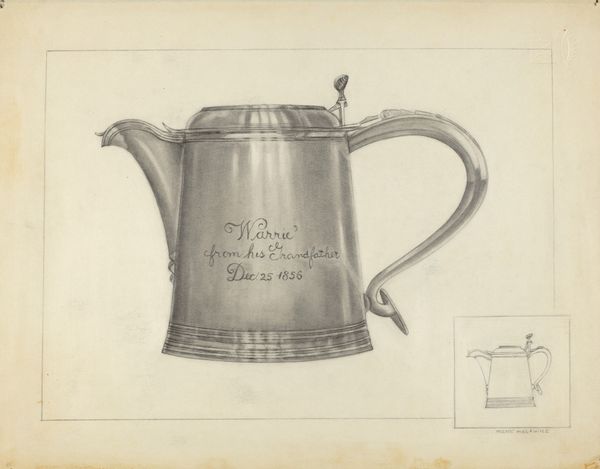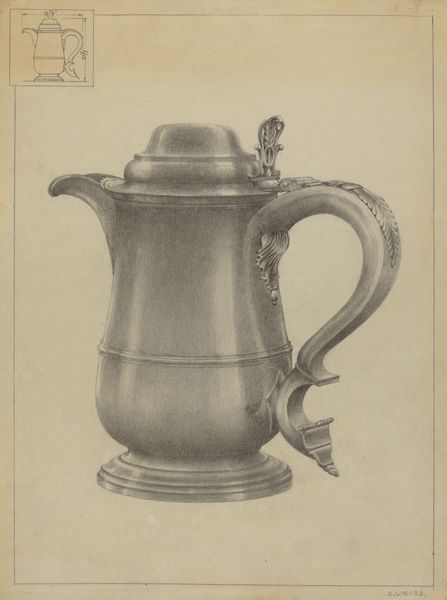
drawing, pencil, graphite
#
drawing
#
pencil
#
graphite
Dimensions: overall: 23.3 x 28.5 cm (9 3/16 x 11 1/4 in.)
Copyright: National Gallery of Art: CC0 1.0
Curator: Editor: So, this graphite drawing from around 1936 is titled "Silver Tankard" by Leo Drozdoff. It feels very meticulous, almost like an advertisement or an architectural study. How would you interpret this work? Curator: Seeing this tankard, I'm immediately drawn to think about what such an object represented in 1930s culture. The very notion of "silver" signifies wealth, doesn't it? And, given that the drawing dates from the Great Depression era, how does its emphasis on a luxury item comment on the disparities of the time? Does it celebrate wealth, or perhaps subtly critique its inaccessibility? Editor: That’s interesting. I hadn’t thought about the Depression-era context. I guess I just saw the craftsmanship. So the drawing then becomes more about class? Curator: Not just class, but how class intersects with ideas of value and labour. Think about who would have owned such a tankard, and who might have been producing drawings of luxury items for possibly aspirational or marketing purposes. Consider, too, the artistic labor that Drozdoff invested in representing it with such precision. What stories do those two contrasting roles tell? Editor: I see what you mean. The drawing style feels so detached, like it avoids being emotionally involved, which, considering your argument, emphasizes the privilege the tankard embodies. Like a silent observer. Curator: Exactly. It refrains from romanticizing, thus indirectly underscoring its socio-economic reality. What does that say about the potential future owners of such a product? Do you think that in 1936 people desired these sort of lavish products, despite the ongoing issues due to the great depression? Editor: This has given me so much food for thought about the purpose and role of even seemingly simple drawings like this. I'll definitely look at art from that period in a new light now. Curator: I’m glad to hear that, it's crucial to always explore the layers of historical context.
Comments
No comments
Be the first to comment and join the conversation on the ultimate creative platform.
